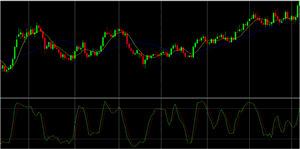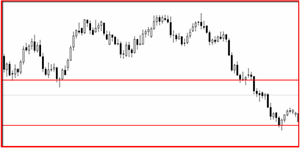As soon as you enter into the forex markets you will probably be bombarded with information about indicators all claiming to do lots of wonderful things to help a trader become profitable, say the staff of Don't Let the Forex Drive You Up the Wall.
I understand the first response for many traders is to try and find the easiest way to analyze the forex charts but do these indicators really help or are they just a distraction?
Placing indicators on our charts may help some traders and I have no problem at all with traders that use indicators as long as they do actually help but if you are honest with yourself, how many times has an indicator got you into a bad trade or stopped you entering a valid trade?
Indicators on the surface are attractive to many new traders because there seems to be an indicator for every specific situation, some indicate the current trend or momentum, some tell us when price is over bought or oversold, etc…and so they seem to provide additional guidance, to add strength to a traders toolbox.
It's very common to over complicate forex trading and trying to get too smart by adding indicators to analyze the markets is what can cause confusion and information overload. The lack of rules imposed on the forex means it is hard to know what we should and what we shouldn't use to help us trade.
I myself started off trading with two exponential moving averages on my charts, thinking they would help me analyze the forex charts. The problem is you become quite reliant and attached to the indicators after a while and removing them is a hard decision. Thankfully, I did and haven't looked back since.
I personally feel indicators are mainly used to mask the fact that some traders are unable to read the charts properly. Why use an indicator to determine what is exactly going on in the markets or when to enter or exit a trade, it just seems crazy!!
Drawbacks to Using Indicators
There are two main types of indicators, the first are known as “lagging” indicators, like for example moving averages. These present signals after the market has turned, meaning the market has already made the big move before you get the signal to enter the trade. So you basically miss the boat. So they are useful for when the markets are trending strongly but terrible when the market is range bound.
The other type are “leading” indicators, like for example, RSI. They try to predict when price may turn around and so are designed to help traders to pick tops and bottoms. The problem being they can be very dangerous and misleading because they produce lots of false signals before the market actually turns. So in a strongly trending market they will tend to show over bought or oversold signals constantly. The leading indicators are more designed for range trading.
NEXT PAGE: Alternatives to Indicators
|pagebreak|So what we have are two types of indicators that each work for differing market conditions. The next step many traders take is to then mix the two different types of indicators up, thinking it will help them to trade both trending markets and ranging markets. Sounds pretty complicated already, right?
So, here's an example of a chart filled with indicators and one below it with no indicators. Which looks clearer and easier to analyze the current market to you?
Therefore, indicators do have some merits but also have some pretty big drawbacks. I guess they are so popular because they seem to take the hard decision making away from the traders that are maybe not confident enough to trust their own analysis of the market.
The use of indicators can also instill a false safety net and allow traders to deflect blame if a trade fails. Granted there is no trading style that will produce 100% win rates but at least with price action and clean charts we the traders are making the decisions to enter and exit trades and not the indicators.
What's the Alternative Solution
So what's the alternative, well I really believe using price action and simple horizontal support and resistance levels is all you really need. Learning how to read the charts using price action is not easy and takes a lot of time and studying to become competent.
If you do decide to make the leap and study how to learn how to become fluent in reading price action, indicators just fall to the sidelines and you'll begin to see how indicators can actually be a distraction from what is really going on in the markets.
Keeping the charts free from indicators, produces charts that are clean, simple and much nicer to look at, plus they remove all the information that is just not needed. “Keep it simple” I say.
Why not try it yourself, strip back your charts to the bare basics. I know it will feel very strange and almost like you don't know where to look for trades to begin with but in time the art of reading price action does make sense.
You'll begin to see that the market copies what it has done in the past and price just moves from one level to the next.
The harsh reality is there is no quick fix to learning how to trade, adding indicators will never solve the old problem of trying to making money in forex. They may well help new traders at the beginning of their trading careers but in the long term I've found them not to be an essential tool required to trade the forex consistently.
I hope after reading this article it may encourage you to consider removing the indicators from your charts and try just using simple price action with support and resistance levels to trade from.
By the Staff of Don't Let the Forex Drive You Up the Wall




















